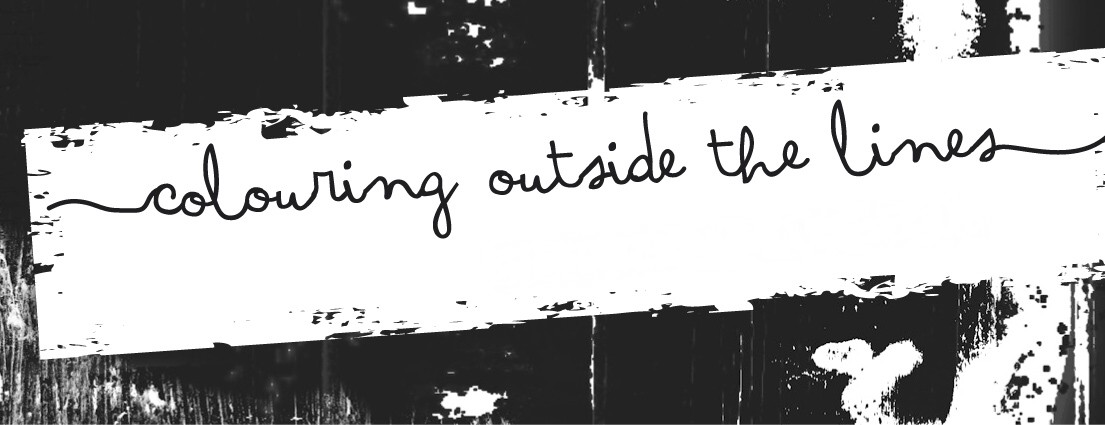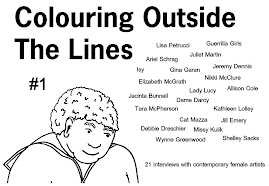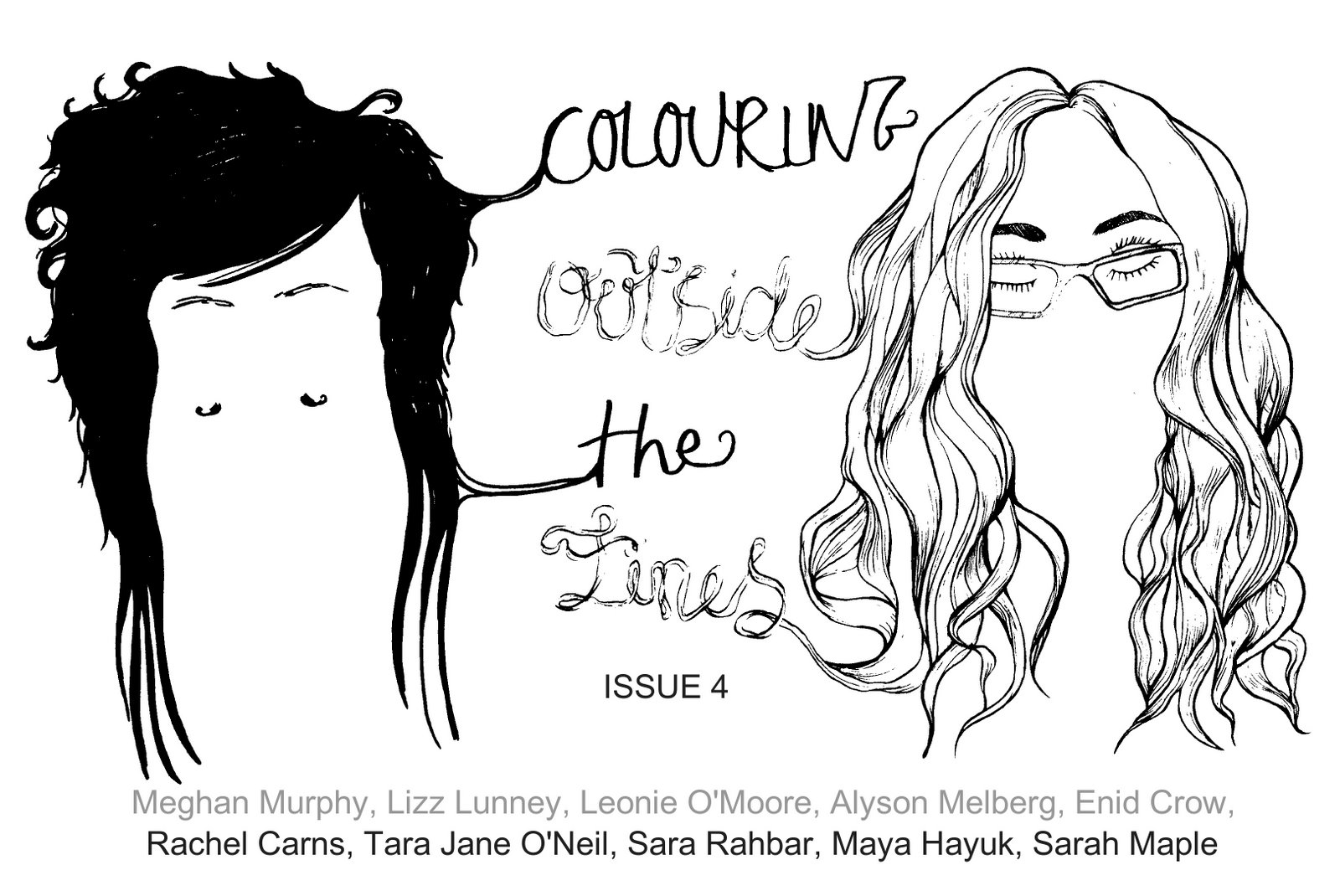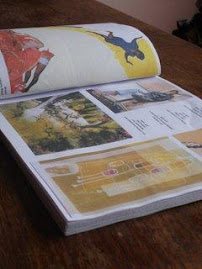

Allison Cole
Location: Providence, Rhode Island. USA
Location: Providence, Rhode Island. USA
How would you describe your art?: Minimal? Quiet?
Currently working on: A million different things
Day job: Freelance Designer, Illustrator, Waitress.
3 Likes: Music. Tequilla. Listening to music and drinking tequila.
3 Dislikes: George W. Bush, George W. Bush, George W. Bush.
Daily Inspirations: Music, my cat roxy, my boyfriend Eric, comics, books.
People & Artists you admire: John Porcellino, Julie Doucet, Gary Panter, Ron Rege jr., my family, my friends....
Superpower you would most like to possess: I don't know if this counts as a superpower, but I have always dreamed of having the powers of Samantha from Bewitched...
- - -
This interview took place at the very end of March 2005. All images reproduced with permission © Allison Cole.
This interview took place at the very end of March 2005. All images reproduced with permission © Allison Cole.
- - -
Hi Allison, how are you, what things are you up to at the moment?
A whole bunch of stuff......I’ve been sewing a lot, making wallets and pins and tote bags and comics and illustrations!
When did you first become interested in art?
I’ve been drawing and writing and imagining things since I was a kid. My mom always encouraged it. She recently found an essay about what I wanted to be when I grew up... I wrote it when I was about 7, complete with illustration ... I basically said I wanted to live alone in an apartment with 10 cats and be an artist.
I’ve been drawing and writing and imagining things since I was a kid. My mom always encouraged it. She recently found an essay about what I wanted to be when I grew up... I wrote it when I was about 7, complete with illustration ... I basically said I wanted to live alone in an apartment with 10 cats and be an artist.
Your website, containing examples of all your artwork, including info on all your comics and your graphic novel, is called ‘comics of love’. Do you see your relationship to art, and production of it, as an act of love?
Yes! People often misunderstand the title, thinking the title is referencing comics about love, which is not true at all. I don't draw romance comics! I just love drawing comics!
The illustrations in your graphic novel ‘Never Ending Summer’ have been described as ‘beautifully minimal’. How have you developed this illustrating method, what specific art techniques & equipment do you use in your comics?
I honestly have no idea why I began to draw people in the way that I do, but for about a year prior to starting to seriously draw comics, I obsessively drew the buildings and landscape of Providence. I filled 7 or 8 sketchbooks of ink line drawings. For never ending summer, I used a rapidograph pen and bristol board, and then ran everything through photoshop to clean it up. I have begun to stray from the rapidograph recently in favour of using a quill pen and ink...
I honestly have no idea why I began to draw people in the way that I do, but for about a year prior to starting to seriously draw comics, I obsessively drew the buildings and landscape of Providence. I filled 7 or 8 sketchbooks of ink line drawings. For never ending summer, I used a rapidograph pen and bristol board, and then ran everything through photoshop to clean it up. I have begun to stray from the rapidograph recently in favour of using a quill pen and ink...
How much of a long process is illustrating individual panels to use in your comics?
They take a lot longer than people think! I draw in pen, I don't really pencil anything, so when I screw up I have to white it out... I usually spend a great deal of time just staring at every panel, switching things around.
They take a lot longer than people think! I draw in pen, I don't really pencil anything, so when I screw up I have to white it out... I usually spend a great deal of time just staring at every panel, switching things around.
Does silk-screening your minicomics yourself & self-publishing them put you in a position whereby you feel in control in your own output, and help you feel more connected to your own cultural production?
Yes, I love the whole process; sometimes the production aspect is more fun than drawing the comic! I studied printmaking in school, so I guess it makes sense that I am drawn to making things in mass quantities. For never ending summer I designed and did the layout for the whole book, dealt with the printers, etc. The publisher offered to hire someone to do all that, but I preferred to do it myself...mostly to maintain control of my work, and to understand the process of publishing. It was a very valuable experience.
How did the project of putting out a published graphic novel, Never Ending Summer, come about for you?
I had just about completed the book; the final chapter was still in sketch form. I had a vague idea that I would try to publish it myself, but that could have been a total disaster. I sent it off to Jeff Mason of Alternative Comics and asked if he would be interested in it. He emailed me back a few weeks later and said he wanted to publish it, and it came out about a year later.
I had just about completed the book; the final chapter was still in sketch form. I had a vague idea that I would try to publish it myself, but that could have been a total disaster. I sent it off to Jeff Mason of Alternative Comics and asked if he would be interested in it. He emailed me back a few weeks later and said he wanted to publish it, and it came out about a year later.
Your work has featured in many anthologies, including Megan Kelso’s Scheherazade. I’ve recently read Megan’s position on that particular anthology, whereby she now wants to distance herself from it because of the way the printers and publishers did not support her, and the work within the book, by allowing some mis-printed work to be published, showing inaccurate representations of individual’s hard work, and not allowing a re-print to correct the problems caused by printing. Is it daunting, especially coming from a background of self-publishing your art, to hand over your work to be included in anthologies, for fear of how your work may be presented/displayed, or do the rewards of being featured in collective books, outweigh any concerns?
I love submitting to anthologies because I love the people and the other artists within the comics community. It is always an honour to be asked to be in a book with so many other talented people.
I love submitting to anthologies because I love the people and the other artists within the comics community. It is always an honour to be asked to be in a book with so many other talented people.
How did you become involved with the Scheherazade project? Did its aim of showcasing female cartooning talent, and its appeal (as the jacket states), to ‘those following the third wave of feminism’, have any specific impact on your decision to become involved?
Megan is an amazing artist and a great leader. As soon as she started talking about the project, I was very excited. And I liked the idea that the anthology would be emphasized first as a book of great stories, and second as an anthology containing all women. The strength of the stories is more important than the gender of the creator. Megan took a very active role in editing the stories and making suggestions. It was a great experience to work with her. It was (and is) so so so disappointing what happened to the book and the lack of support that Soft Skull gave her.
Megan is an amazing artist and a great leader. As soon as she started talking about the project, I was very excited. And I liked the idea that the anthology would be emphasized first as a book of great stories, and second as an anthology containing all women. The strength of the stories is more important than the gender of the creator. Megan took a very active role in editing the stories and making suggestions. It was a great experience to work with her. It was (and is) so so so disappointing what happened to the book and the lack of support that Soft Skull gave her.
Reflecting on Megan’s problematic relationship with the printers and publishers of Scheherazade, do you see the art world as an area where certain parties can be too quick to, or see little wrong with short-changing or disrespecting female artists, their art, experience or their decisions?
I don't know if it has so much to do with disrespect for women, as it has to do with disrespect for comics as a medium. Soft Skull press is primarily a leftist-literary publisher that has had no experience publishing a book with images. The first question I asked myself after I heard about the whole incident was, if this was a text and an entire chapter was misspelled, or if pages were printed in an incorrect order, they would scrap the whole run and print it again, right? The comics that were misprinted in the book are totally unreadable. And the most painful part is that they are beautifully drawn comics! I really don’t know what Soft Skull was thinking. They should be embarrassed.
I don't know if it has so much to do with disrespect for women, as it has to do with disrespect for comics as a medium. Soft Skull press is primarily a leftist-literary publisher that has had no experience publishing a book with images. The first question I asked myself after I heard about the whole incident was, if this was a text and an entire chapter was misspelled, or if pages were printed in an incorrect order, they would scrap the whole run and print it again, right? The comics that were misprinted in the book are totally unreadable. And the most painful part is that they are beautifully drawn comics! I really don’t know what Soft Skull was thinking. They should be embarrassed.
You are most well known for your comics, but your artwork has also been used in many other design and illustration projects.
How important is it to you that your creative output be varied and flexible?
I love keeping busy and doing other things besides comics. It keeps my brain stimulated and prevents me from falling into a rut. Also, drawing comics is my passion but it makes pretty much no income, so I have to do other things to make a living!
Your skills and art have been commissioned for many projects, including designing logos for companies. With such commissioned projects, is it easier to work to other people’s deadlines and specifications, or do you find this aspect, coming from a background of independent publishing, frustrating or restrictive to your creativity?
No, it is not frustrating at all. Sometimes it is a relief for someone to tell me what to draw and how to draw it! I enjoy working within constraints; sometimes some really interesting things can come of it.
How important is it to you that your creative output be varied and flexible?
I love keeping busy and doing other things besides comics. It keeps my brain stimulated and prevents me from falling into a rut. Also, drawing comics is my passion but it makes pretty much no income, so I have to do other things to make a living!
Your skills and art have been commissioned for many projects, including designing logos for companies. With such commissioned projects, is it easier to work to other people’s deadlines and specifications, or do you find this aspect, coming from a background of independent publishing, frustrating or restrictive to your creativity?
No, it is not frustrating at all. Sometimes it is a relief for someone to tell me what to draw and how to draw it! I enjoy working within constraints; sometimes some really interesting things can come of it.
What skills and knowledge gained from your degree (in printmaking) do you still find most useful in your day-to-day art production?
I find that I approach everything in layers. When I draw or paint, I put down the solid colour first then build on top of it, like screen printing. I love repeating and drawing the same thing over and over again. I also approach everything from the standpoint of mass production. And when I make anything, whether it is tote bags or wallets, it is usually never in quantities less than 25.
I find that I approach everything in layers. When I draw or paint, I put down the solid colour first then build on top of it, like screen printing. I love repeating and drawing the same thing over and over again. I also approach everything from the standpoint of mass production. And when I make anything, whether it is tote bags or wallets, it is usually never in quantities less than 25.
You have previously designed CD layouts, covers and designs, and have also designed T-shirt art for the band, The Chinese Stars. How did you become involved in these music projects? Do you find working on projects like this exciting to be a part of?
I love music, so doing work for anything that is musically related is a great thing to be a part of. My boyfriend Eric is a member of the Chinese Stars, so that is how I started doing the t shirt designs for them. I also make pins and tote bags for them to sell at their merch table. Me and Eric brainstormed together to come up with the ideas for the designs. It is a lot of fun....
I love music, so doing work for anything that is musically related is a great thing to be a part of. My boyfriend Eric is a member of the Chinese Stars, so that is how I started doing the t shirt designs for them. I also make pins and tote bags for them to sell at their merch table. Me and Eric brainstormed together to come up with the ideas for the designs. It is a lot of fun....
I have read that you were involved with Ladyfest Bristol here in the UK. How did you become involved with that, and in what ways were you involved? What are your thoughts on such festivals?
The festival seemed like a great idea, and I believe I got involved through Ariel Bordeaux, she was invited to send art and comics to be displayed at the festival. I sent off some minis and a print for display.
The festival seemed like a great idea, and I believe I got involved through Ariel Bordeaux, she was invited to send art and comics to be displayed at the festival. I sent off some minis and a print for display.
Your strip ‘Joe Blow’ is an example of how your work could be described as ‘beautifully minimal’, in its illustrative technique, but narratively it’s actually really complex, touching on issues involving stalking and sexual harassment. Do you think it is important to mix beauty and darkness together, to provide light and shade to strips and comics like these?
Yes, I hope to do work along similar themes for my next story....
Yes, I hope to do work along similar themes for my next story....
What is the significance of the body shapes of the characters in Joe Blow, and Never Ending Summer as a whole? They are humanistic without taking on wholly conventional human forms. Does this allow you more freedoms, or perhaps distance, to allow the characters to act out a range of scenarios and situations? Or is the significance of this drawing style much more simple than that?
Well, I just began drawing in that way for no conscious reason. As I started doing longer stories I slowly realized the benefits and drawbacks of the way that I draw. The benefits are that the
simplified style allows me to make my characters more universal and less distracting- instead the emphasis is on the characters body language and dialogue. The drawbacks are that a lot of people tell me that it is confusing to distinguish who is who in my stories, and I cannot use facial expressions to convey emotions beyond moving the eyebrows and eyes.
What for you are the most enjoyable and satisfying aspects of being an artist?
Being able to work through personal emotions and experiences through making and creating things. I can only hope that every time I make something it might have an impact on someone. If my art only touches one person, that's enough for me.
Being able to work through personal emotions and experiences through making and creating things. I can only hope that every time I make something it might have an impact on someone. If my art only touches one person, that's enough for me.















No comments:
Post a Comment